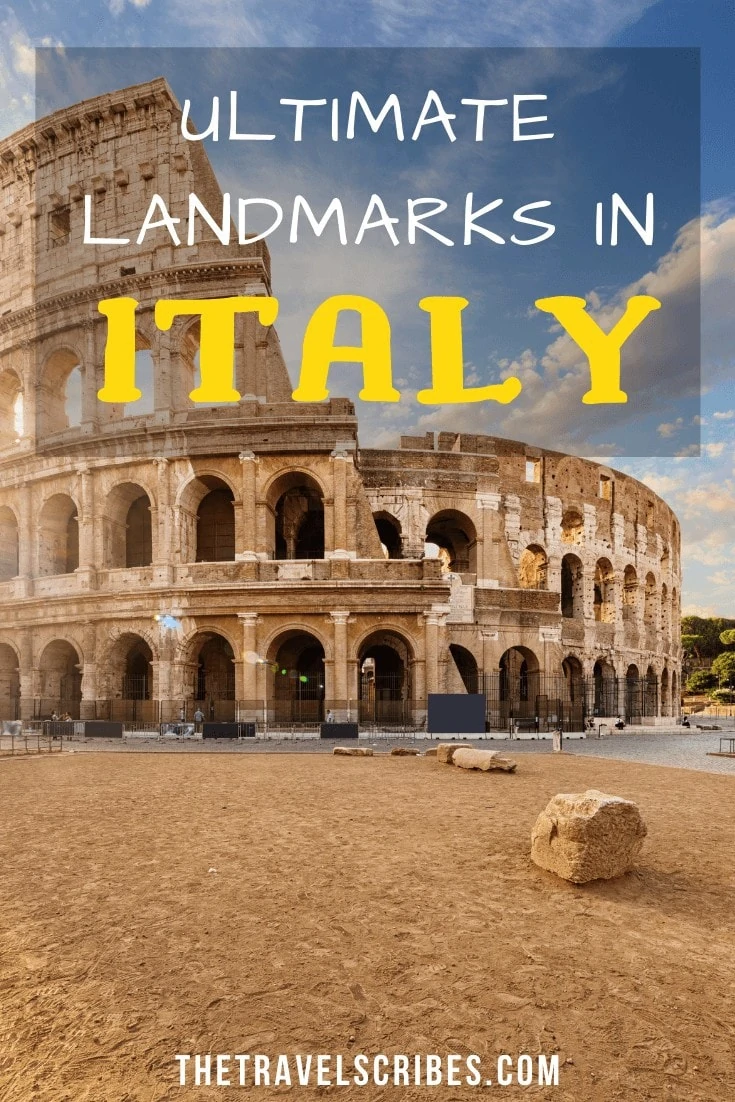The nation that brought the Renaissance to the world, with a rich history of building exquisite structures and monuments that have inspired a thousand love stories. It can only be Italy. A country that is so steeped in history and beautiful landmarks that you’re as likely to stumble over them (like the Spanish Steps) as you are to channel your teenage angst as you encounter that famous balcony from Romeo and Juliet. To pay homage to these historic icons, we’ve asked some of the best travel writers in the business to give us their top picks of the must-visit landmarks in Italy. Keep reading to find out which 25 magnificent monuments made it onto the list…
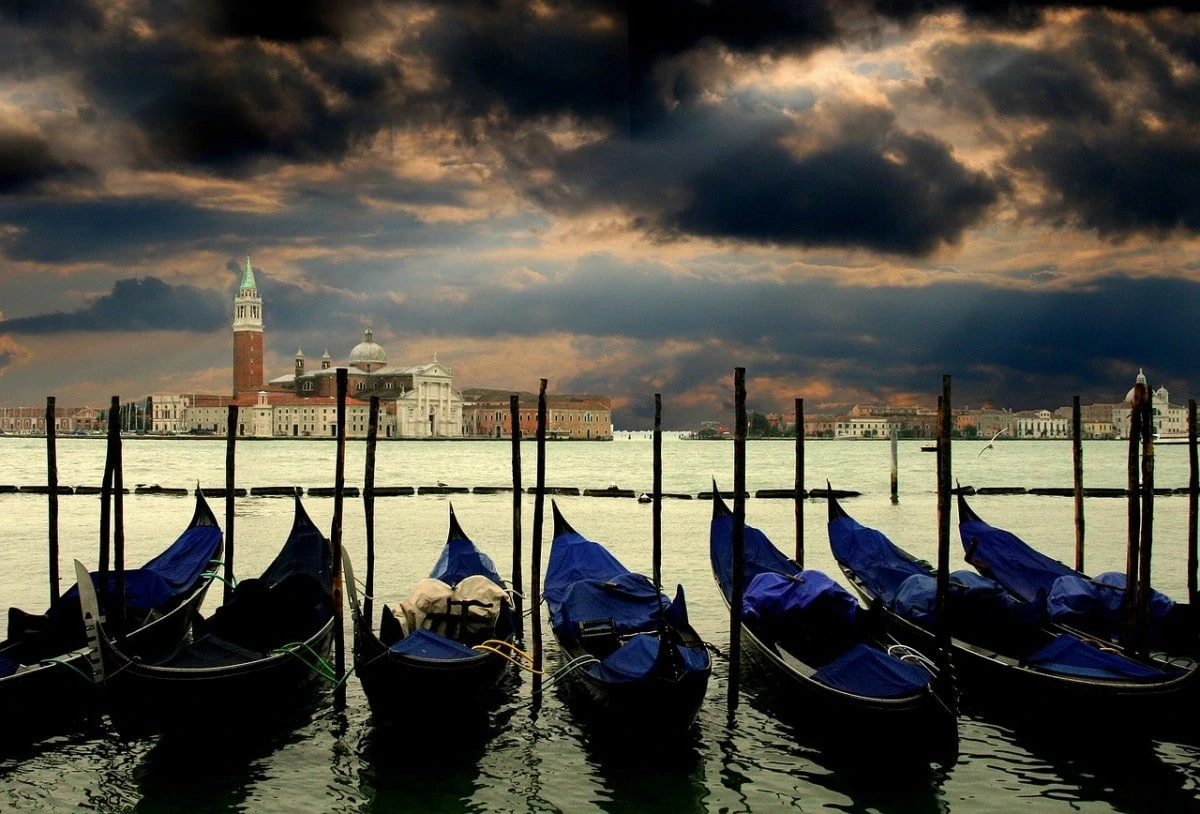
Skip ahead
Our favourite 10 Landmarks in Italy
- Colosseum
- Leaning Tower of Pisa
- Florence Cathedral
- Trevi Fountain
- St Mark’s Square
- Ponte Vecchio
- Duomo di Milano
- Pantheon
- Duomo in Orvieto
- Dolomites
Colosseum, Rome
Explored by James from The Travel Scribes
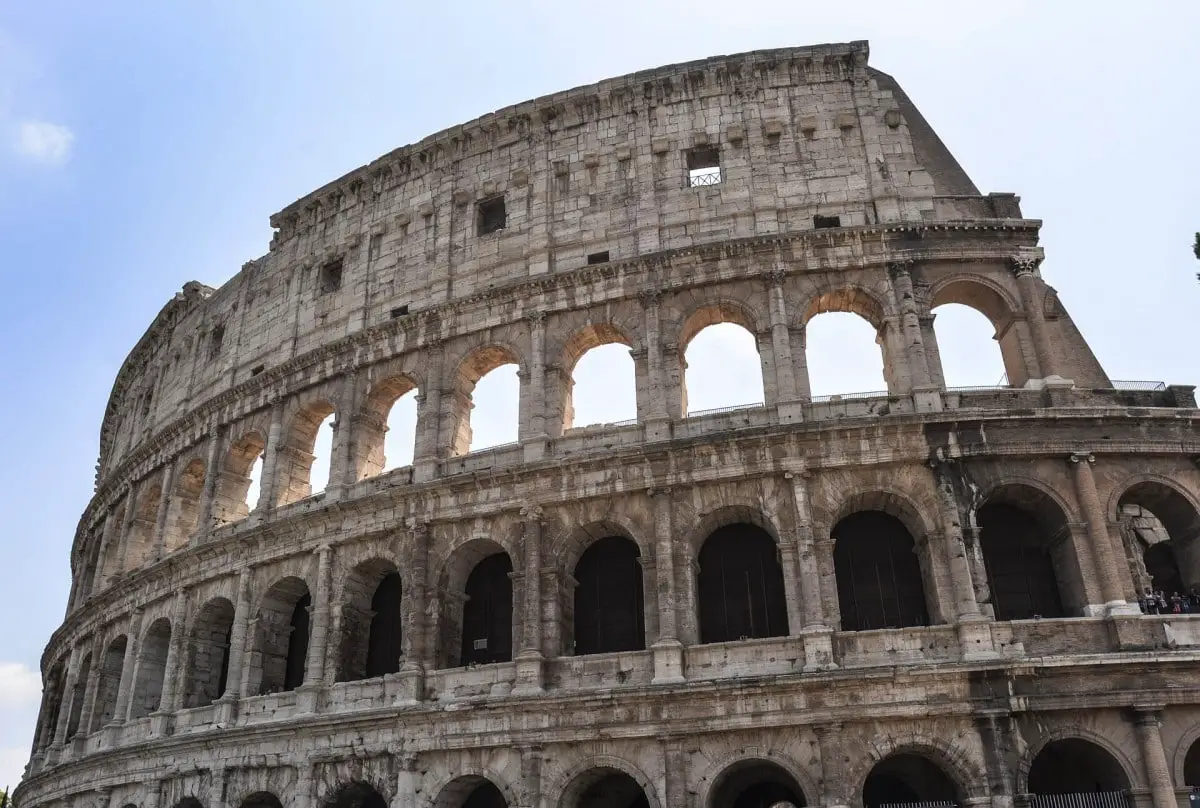
We had to kick off the landmarks in Italy list with what is one of the most famous landmarks in the world, the colossal Colosseum.
Building of this amazing piece of engineering began during the time of Emperor Vespasian and was finished during the reign of Emperor Titus in 80 AD, and is a monster 150 metres wide by 189 metres long, making it the largest amphitheatre ever built.
With the capacity of somewhere between 50,000 and 85,000 fans, the Colosseum is bigger than a lot of modern football stadiums built today. It must have been quite some sight to see the gladiatorial battles taking place when it opened some 2,000 years ago.
It’s undoubtedly one of the most famous Italian buildings, and a must on any Rome itinerary.
Duomo di Firenze, Florence
Explored by Nicholas from Rambling Feet
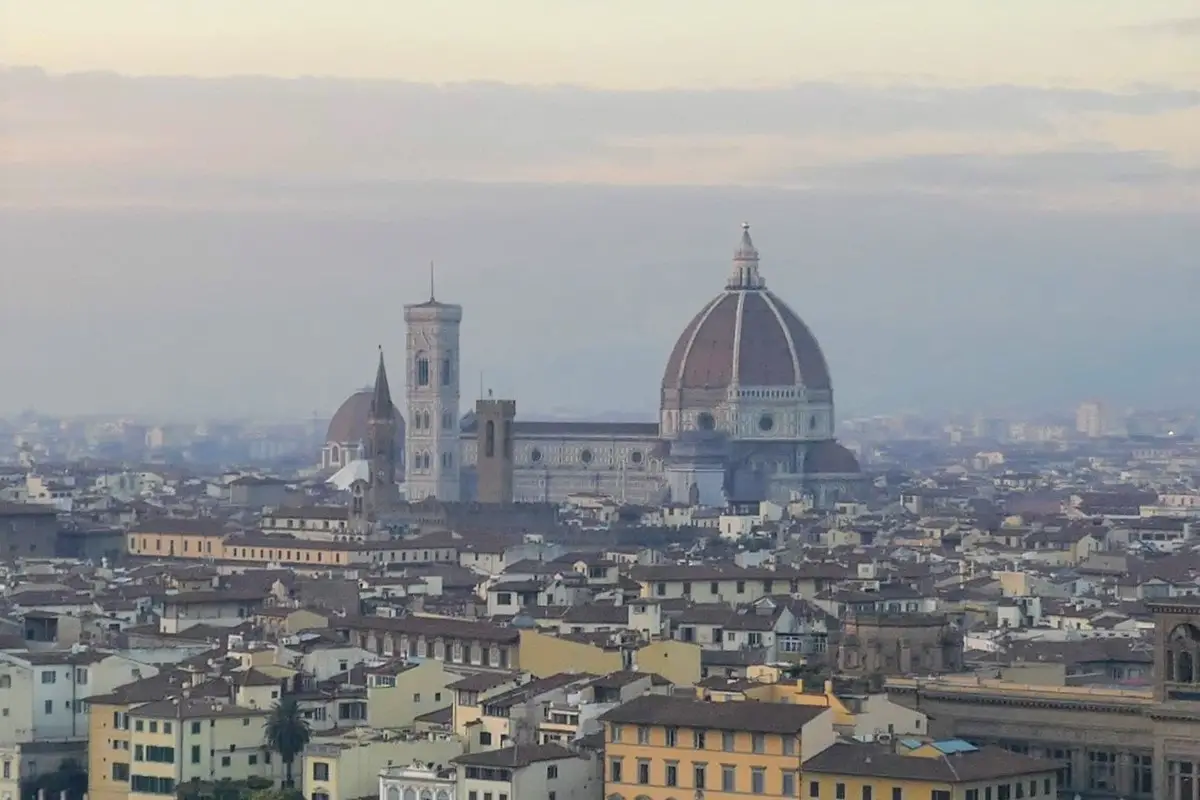
No foreigner’s mental image of Florence is complete without Santa Maria del Fiore, also known as the Duomo di Firenze (Florence Cathedral).
Can you imagine the city without the Duomo’s red octagonal dome or the distinctive banded marble walls that dominate the square it stands on? The cathedral of the city has stood on its site in some form since the 4th century, while the present structures date from the 1400s. The shadows of luminaries of the Arts and the Sciences have crossed these aisles; the 24-hour clock, for instance, was painted by Paolo Uccello and worked on by Galileo Galilei much later.
The dome was the first of its kind in the Western world and it remains unique to this day. That is not the only artistic treasure: the bronze doors and mosaics of the baptistery and many more sculptures await those who purchase an “Infero” ticket for 18 Euros (16.50 GBP/21.25 USD).
The same ticket allows the holder to get in line to climb the 414 steps of Giotto’s bell tower, see the city from the dome at an appointed time and visit the Opera museum that houses works by Donatello and Michelangelo, among others. Otherwise, walking around the interior of the Duomo is free of charge, as is admiring it from the other side of the Arno River as it glows at sunset.
Garisenda and Asinelli Towers, Bologna
Explored by Ben from Driftwood Journals
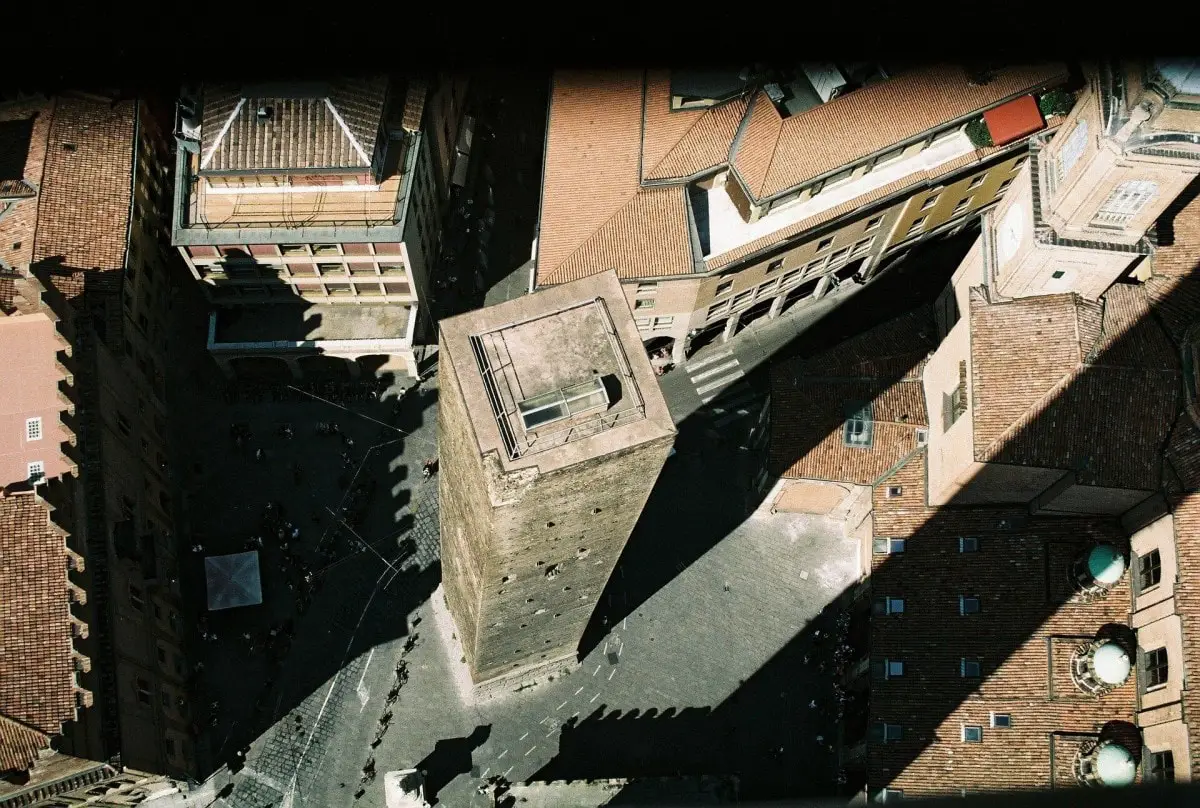
Think of Italy and leaning towers and there’s no question that the first landmark to jump into your head will be the iconic Torre di Pisa. But Italy is actually riddled with wonky towers, and the wonkiest of all are in fact located in Bologna.
Dating back to 1109, the ancient Garisenda and Asinelli towers, or “Le Due Torri” (The Two Towers) date back to Bologna’s medieval beginnings. It’s said – though widely contested – that the towers were named after two local families who competed to prove their power by building the tallest tower.
Granted, from the ground they don’t look all that tall, but as you climb the 498 steps of the top of Asinelli tower (the tallest of the two), each rickety wooden flight seemingly obeying a different set of gravitational laws, it doesn’t take long to realise just how much higher 97.02 metres is than any other building in Bologna. The 360-degree views from the top are quite literally dizzying, and still the best you’ll find of this burnt-peach-hued metropolis.
But don’t fret too much about the tower crumbling beneath you as it has survived all sorts of damage over the centuries – even a lightning bolt failed to strike it down when it hit the top in 1824!
Entry is €5 (4.50 GBP/5.75 USD) but you need to be aware that there is only one time slot per hour, so it’s important to plan your day accordingly and book your visit on the website.
Duomo di Milano, Milan
Explored by Mansoureh from Travel with Mansoureh
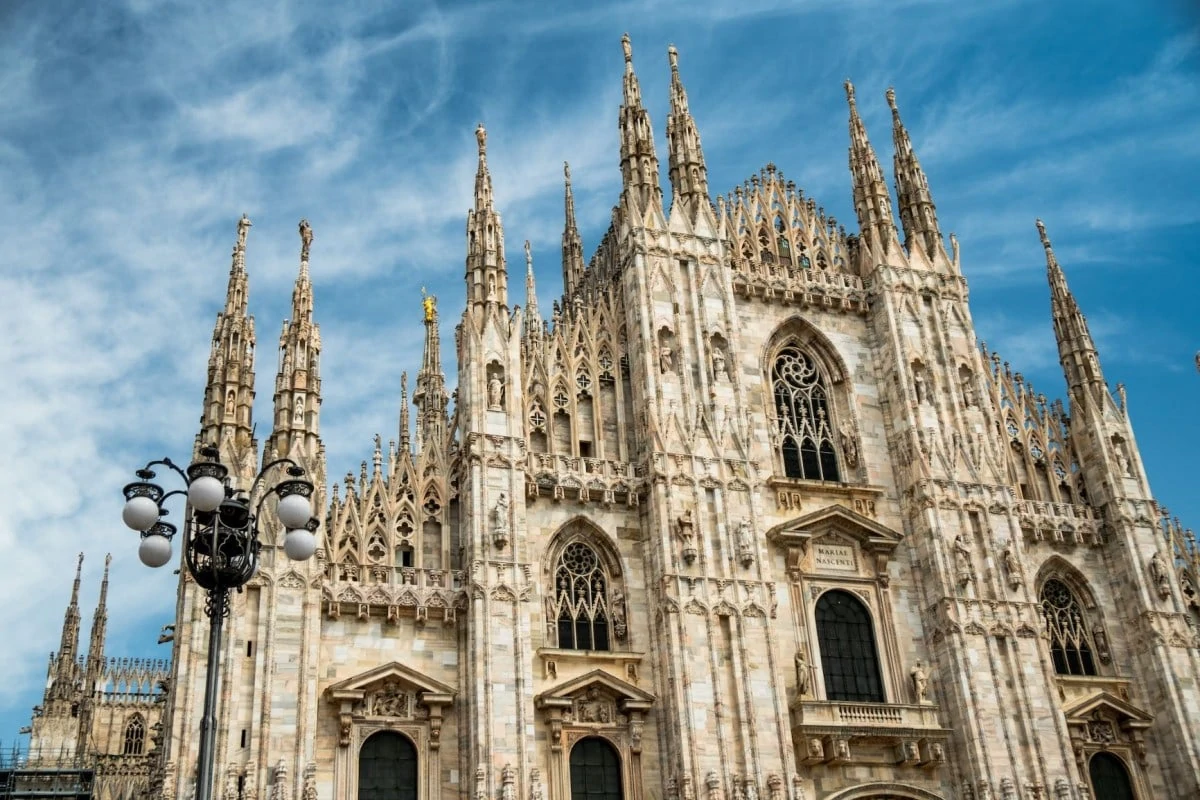
Milan Cathedral, known as Duomo di Milano, standing in the heart of Milan at Piazza del Duomo is one the most beautiful churches in Europe and one of the most photographed attractions in Milan; definitely one of the most renowned Milan landmarks.
The construction work on the cathedral began in 1386, 600 years ago, and in the 19th century when Napoleon was a ruler, the façade was completed, but the construction work has never completely finished.
A couple of interesting facts about Duomo di Milan are that it is the fifth-largest church in the world and this church was the place where Napoleon Bonaparte was crowned King of Italy in May 1805.
The decorations of detailed 3,400 statues, 700 figures and 135 gargoyles make the Milan Cathedral unique and very impressive. Inside the cathedral with beautiful stained-glass windows and huge columns is a fantastic display of artwork.
Visiting this remarkable Italian landmark is one of the best things to do in Milan. This place is so popular and the queue for getting inside can be very long. That is why it is highly recommended to book your ticket online and go there early in the morning, at 8:00 am when Duomo opens the door to the visitors. Make sure to purchase the ticket which allows you to go to the rooftop, where you’ll find an amazing view of the city.
Trevi Fountain, Rome
Explored by Katy from Untold Italy
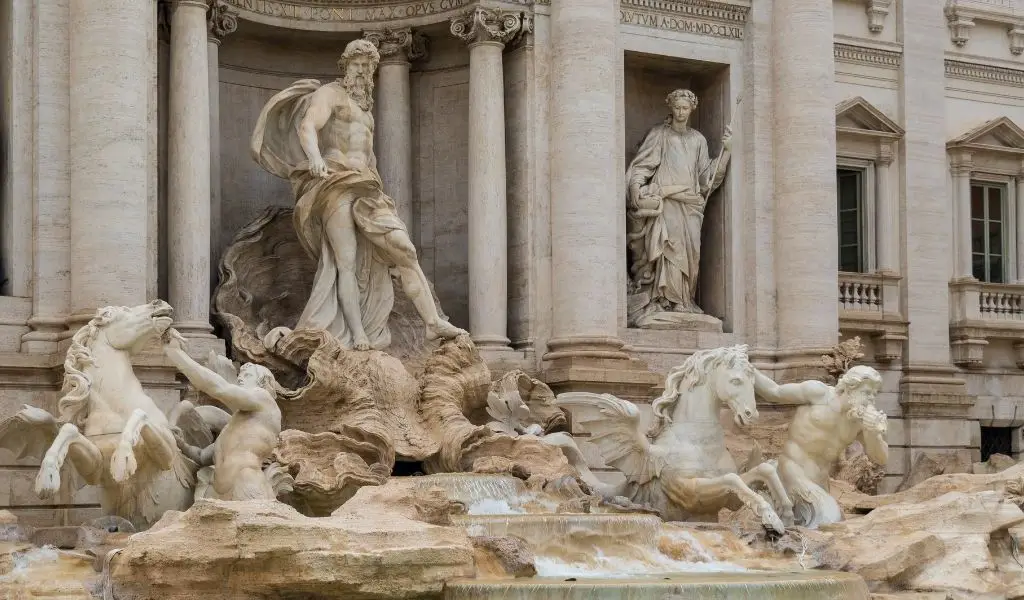
When you think of Rome, no doubt the Trevi Fountain is one of the first images that springs to mind, as it’s one of the most famous landmarks in Rome. The flamboyant gushing fountain is one of the enduring symbols of the city. Built over almost 150 years in the 17th and 18th centuries, the monumental fountain is on the site of an ancient water source and celebrates three popes. Soaring over 26 metres high and almost 50 metres wide, the theme of the fountain is “taming of the waters” and you’ll notice the god Oceanus, Tritons as well as goddesses representing abundance within the structure.
No doubt you’ve seen the Trevi in photos and movies like Roman Holiday and La Dolce Vita but there’s nothing quite like seeing the fountain for the first time. It’s tucked into a piazza within Rome’s ancient cobbled streets and has the Palazzo Polo as its dramatic backdrop. Legend says that you should throw a coin into the Fontana di Trevi to ensure your return to Rome but know that the money is going to a good cause. Well over one million euros are collected from the Trevi waters each year and are used to support homeless people in Rome.
Su Nuraxi, Barumini, Sardinia
Explored by Claudia from Strictly Sardinia
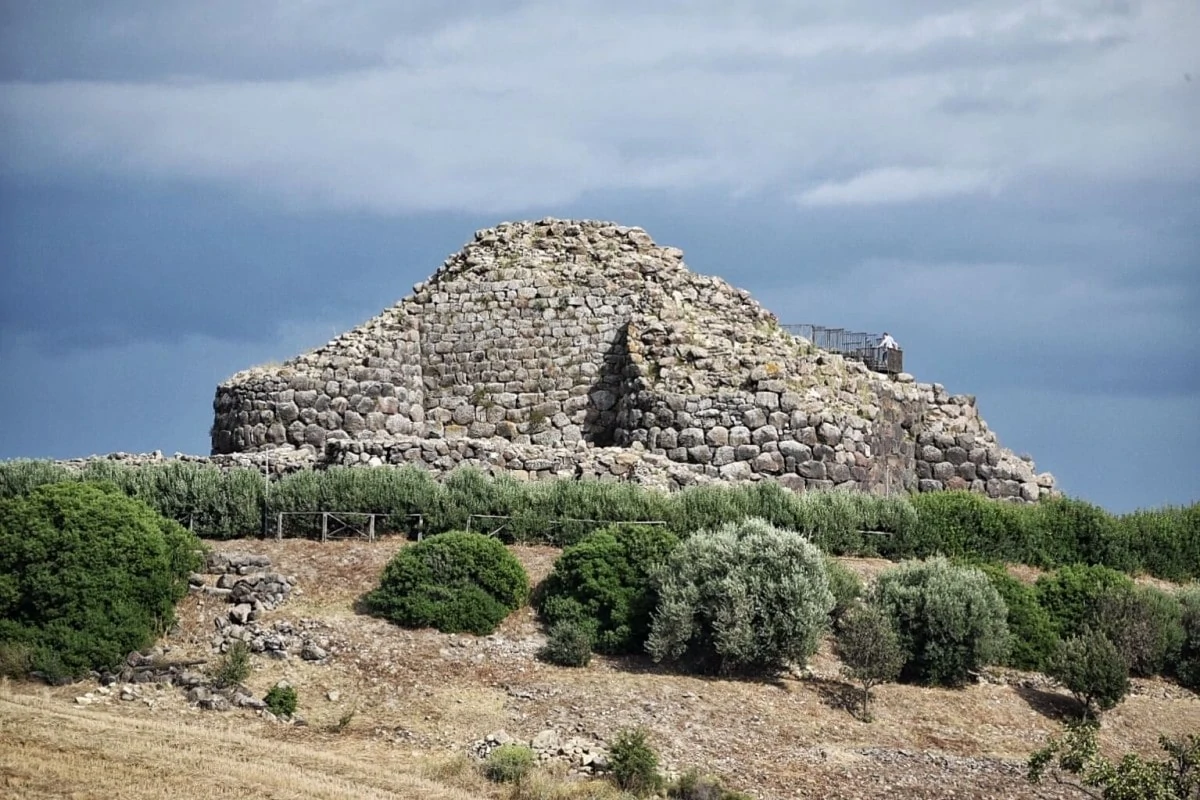
Nuraghe are ancient megalithic constructions that are only found in Sardinia, typically built between 1900 BC and 730 BC and whose function is still the object of debate – those most researchers will say that they served as homes of rulers or military strongholds.
There are five different types of nuraghe in Sardinia: protonuraghe, the oldest one, with irregular shape and layout; mixed nuragle; single tower nuraghe, which used to have one single conical tower; “tancadu,” where a circular building was added to the main tower; and polylobed nuraghe, also known as Nuragic royal palaces, characterized by a number of buildings connected to the towers.
There are 7000 nuraghe in Sardinia – most of them yet to be fully excavated. The most famous one is Su Nuraxi, located in Barumini, a small town located at about 45 minute drive from Cagliari, the main city in the island. This is Sardinia’s only UNESCO World Heritage site and a massive complex that was inhabited between 1600 BC and the 3rd century AD.
Su Nuraxi is characterized by four towers, connected by a wall – it thus is a polylobed nuraghe. It’s been built in basalt, a volcanic stone that testifies the ancient volcanic origins of Sardinia.
The site is open daily from 9:00 am to 5:00 or 8:00 pm depending on the season. Admission is 14 EUR (12.75 GBP/16.50 USD) and includes a guided tour in your language of choice.
Pompeii
Explore by Derek and Mike from Robe Trotting
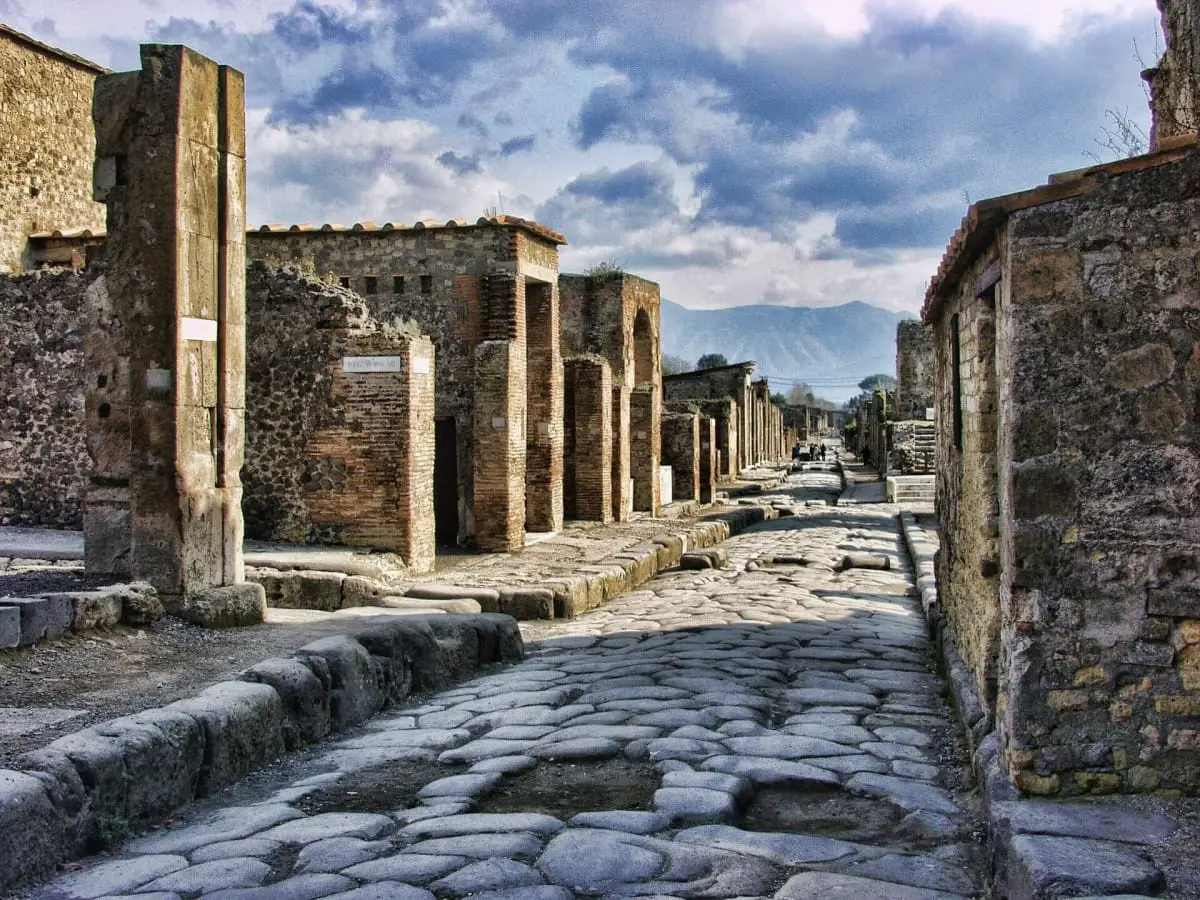
One of Italy’s most iconic landmarks is the sprawling archaeological site of Pompeii in Italy’s Campania region. It’s located near the Bay of Naples among the foothills of Mount Vesuvius. The city was buried in ash and pumice during a catastrophic eruption of the active volcano in the year 79 CE. One of the easiest and most popular ways to visit the site is with a day trip to Pompeii from Naples.
After you reach the site you can explore the excavated streets, homes and buildings of the city. It’s remarkably well preserved and surprisingly expansive. Once inside, visitors are shocked at how advanced the city of Pompeii once was. Before the city was wiped out, clean water flowed to every home and indoor plumbing with flushable toilets were found in most homes.
Within the city you will also find community baths and spas, a Roman amphitheatre, brothels and even hot street food stands. With a guide, you can learn more about each of these buildings and their role in the ancient town of Pompeii.
While in Pompeii, you can’t help but notice Mount Vesuvius looming in the background as you take in the city. It’s another eerie reminder of the geological history that destroyed the city centuries ago.
The Dolomites
Explored by Krisztina from She Wanders Abroad
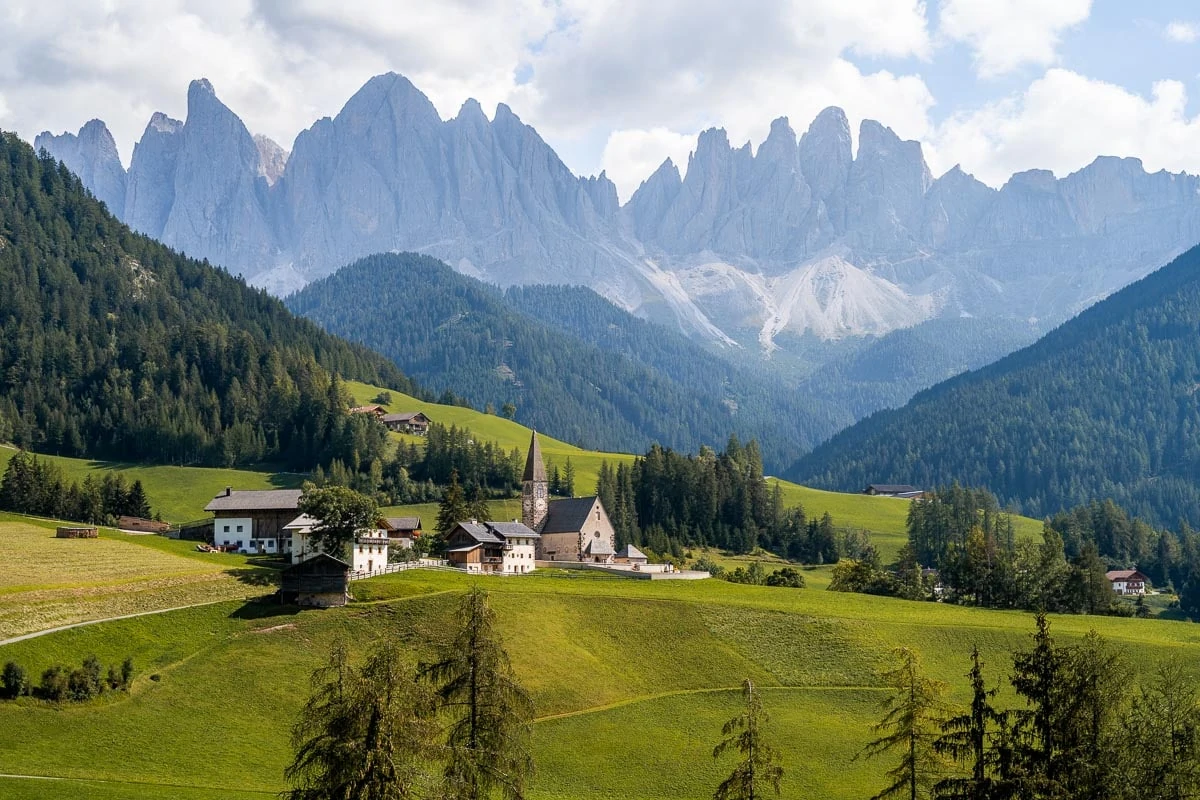
Located in northeastern Italy, the Dolomites are a beautiful mountain range covering more than 140,000 hectares with 18 peaks rising above 3,000 metres. The Dolomites are one of the best well-known landmarks of Italy and they have been declared as a UNESCO World Heritage Site in 2009.
The best time to visit the Dolomites highly depends on what kind of activities you are looking for. It’s a popular skiing spot during the winter months and you can also find some Christmas markets in the area, while hiking, cycling and going on a road trip in the Dolomites are just a few of the popular summer activities.
The Dolomites are a true paradise for hikers, you can find many types of hikes in the mountains and the trails are usually very well maintained and marked. The Three Peaks in Alta Pusteria (‘Tre Cime’ in Italian) are one of the symbols of the mountain range and it’s also one of the best day hikes in the Dolomites which is suitable for beginners and families as well.
You can also find many beautiful alpine lakes nestled between the mountains and they offer countless outdoor activities such as boating, swimming or just simply walking around the lake and enjoying the panorama. Lake Braies (Prager Wildsee) and Lake Carezza (Karersee) are one of the most beautiful lakes in the Dolomites and a must visit place on every Dolomites itinerary.
Forum Romanum, Rome
Explored by Ania from The Travelling Twins
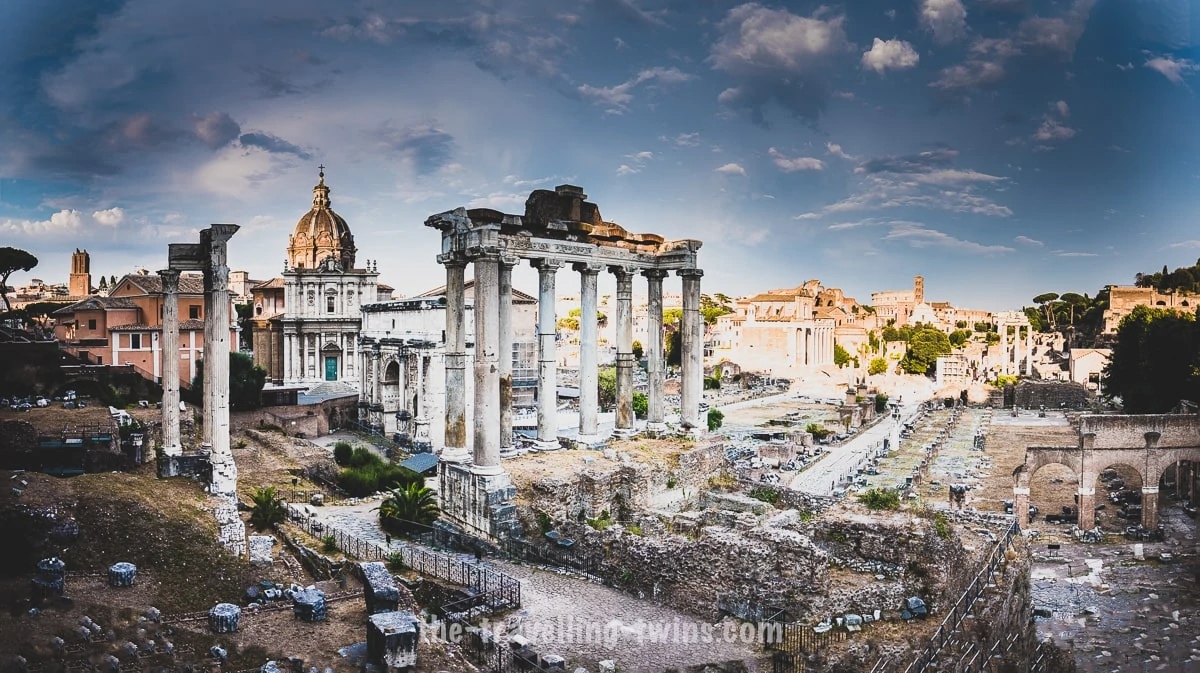
The Roman Forum is the centre of ancient Rome and one of the highlights of the Italian capital. A visit to the historic ruins can be combined with a visit to the neighbouring Colosseum.
The Roman Forum (Foro Romano) was the main meeting place for the people of Rome in ancient times. Forum Romanum was the centre of religious, political and economic life with many buildings important for the life of Roman citizens.
The Forum was located on a square created as a result of the drainage of wetlands in the 6th century BCE. This was possible thanks to the construction of the Cloaca Maxima canal, the mouth of which to the Tiber River is located right next to the Ponte Palatino bridge leading to the Trastevere (Facts about Rome).
With the fall of the Roman Empire, there was a decline in its glory, which was triggered by the earthquake of 851. Until now, only the ruins of ancient buildings have survived, which, however, give an idea of their magnitude.
Today the Forum is a historic ruin that is very eagerly visited and photographed by tourists. You can enter their area (using same ticket you buy to visit Colosseum) or just admire it from the Palatine Hill.
The Roman Forum is open daily from 9.00 to 19.00 from April to September and from 9.00 to 15.00 in October-March.
Island of Burano, Venice
Explored by Claire from Tales of a Backpacker
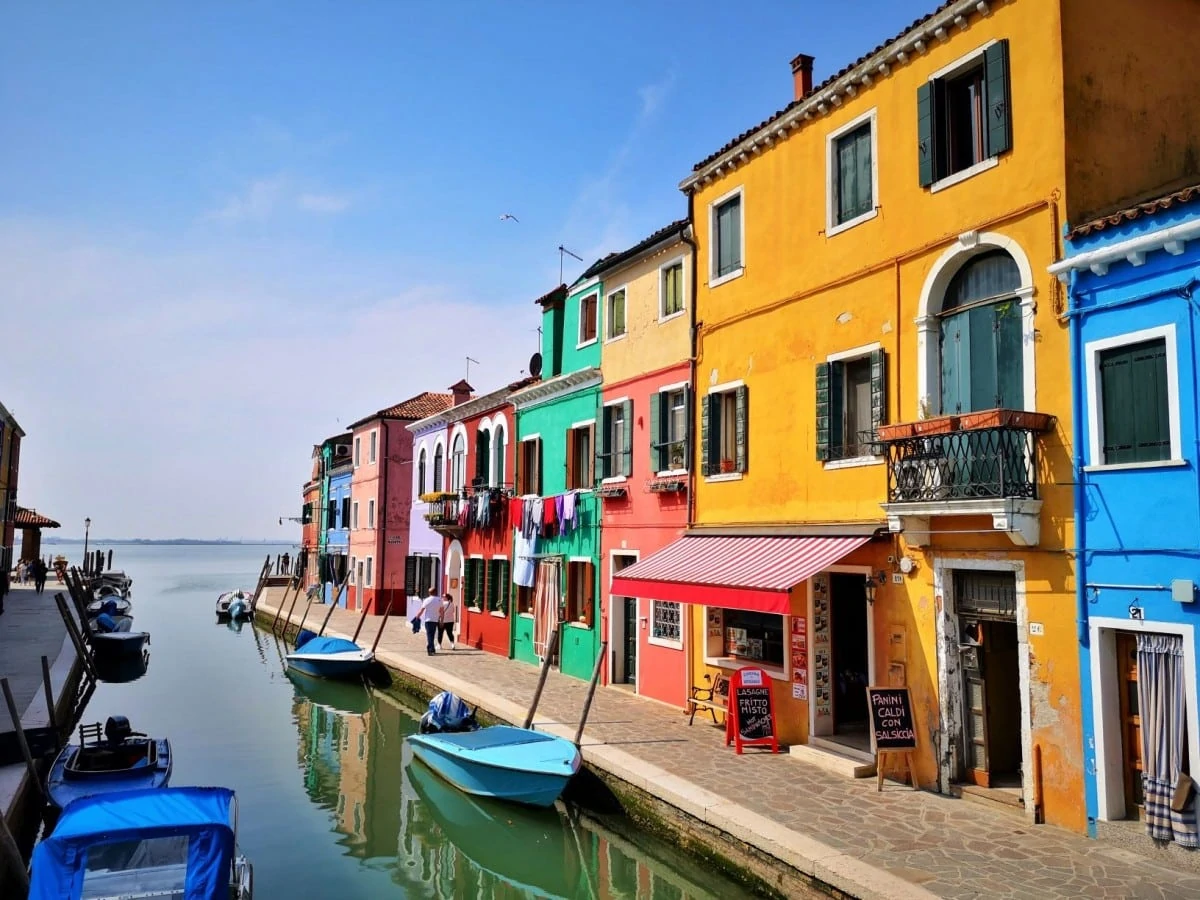
Burano is an island in the Venice Lagoon, about an hour’s boat journey from Venice. It was once a quiet fishermen’s village but has now become one of Italy’s most iconic destinations, and most well-known Venice landmarks.
What makes Burano so special is the brightly coloured houses, which are painted all colours of the rainbow. It is said that the fishermen painted their homes so they could see them easily when they returned from their voyages at sea. It is lovely to walk around the island, admiring the blue, green, yellow and pink houses.
As with Venice, Burano is divided by canals, so you can get the perfect photo opportunity from one of the many bridges on the island.
Burano is also famous for lace-making traditions and you can visit the Lace Museum here or see a lace-making demonstration by local women in one of the shops. Burano has its own local dishes too with lots of seafood such as squid ink risotto – delicious!
Burano makes an ideal day trip from Venice, and although there are places to stay in Burano, most people opt to stay in Venice and take a day trip to Burano. The nearby island of Murano is also famous for glassmaking, so I would suggest visiting both islands in a day. Aim to leave Venice early in the morning, to give you time to explore Burano, have a delicious lunch on the island, then stop off at Murano on the way back to Venice.
Cinque Terre
Explored by Renee from Dream Plan Experience
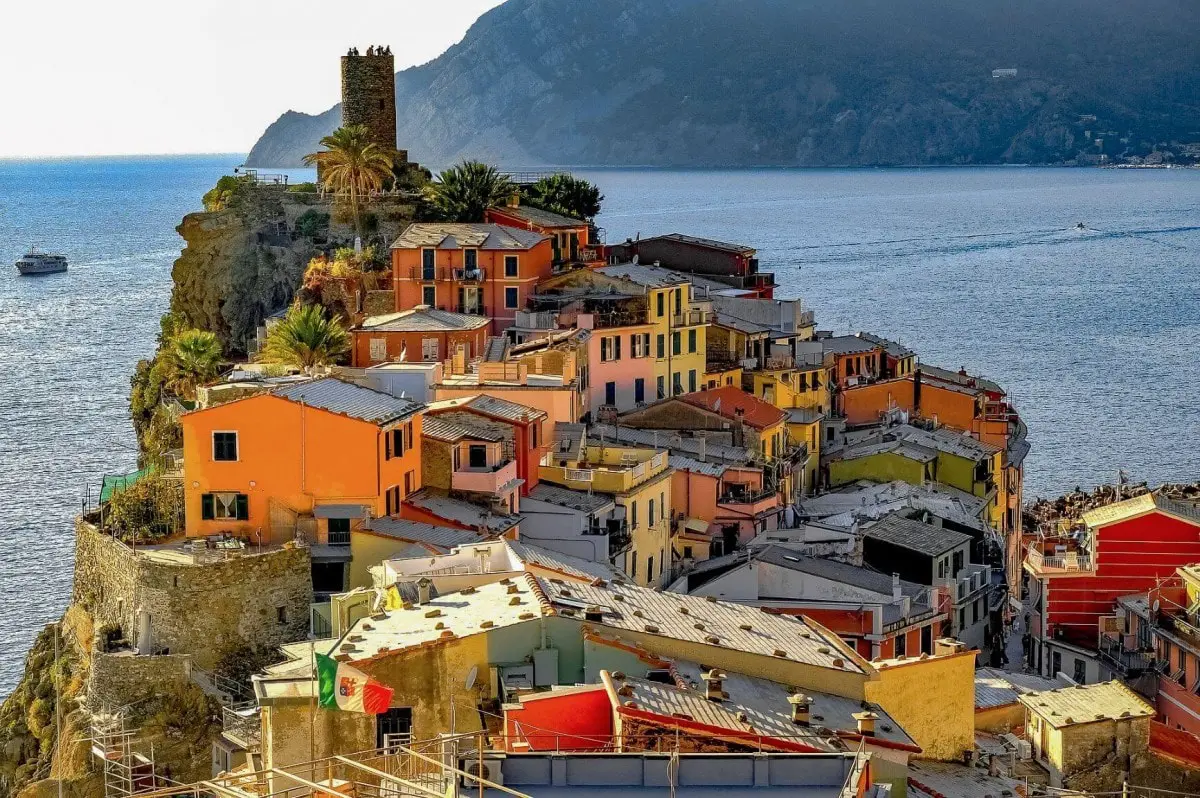
You’ve seen the pictures, right? The pretty pastel coloured houses perched high on the rugged cliffs with the sparkling sea below. The beautiful Cinque Terre, or ‘five lands’, is the stretch of the Italian Riviera coastline made up of five fishing villages each with their own distinct character. It’s a National Park and UNESCO World Heritage Site, drawing 2.4 million visitors a year to hike, boat or train their way through these picturesque coastal villages.
The villages are…
- Monterosso is the biggest and busiest of all the villages. It has a resort-like vibe with noticeably more restaurants, shops and places to stay. It’s the only flat village and offers two beautiful beaches, one sand and one pebble.
- Vernazza is the closest of the five villages to remain a ‘true’ fisherman’s village with its natural harbour and abundance of colourful boats.
- Corniglia is the smallest of all the villages and the most unique. It is sits atop of a rock formation about 100 meters high off the sea. You’ll have to climb 382 stairs to reach the village center, but the view makes it worth it.
- Manarola is the oldest and probably the most photographed village. There are some easy foot trails that cut through the hillside vineyards, offering scenic views over to the next village.
- Riomaggiore is incredibly photogenic with its steep colourful tower houses that frame its tiny habour. This village has the best views from the sea (and at night), so if you were to take a ferry this would be a good destination to arrive/depart from.
Mount Etna, Sicily
Explored by Anda from Travel for a While
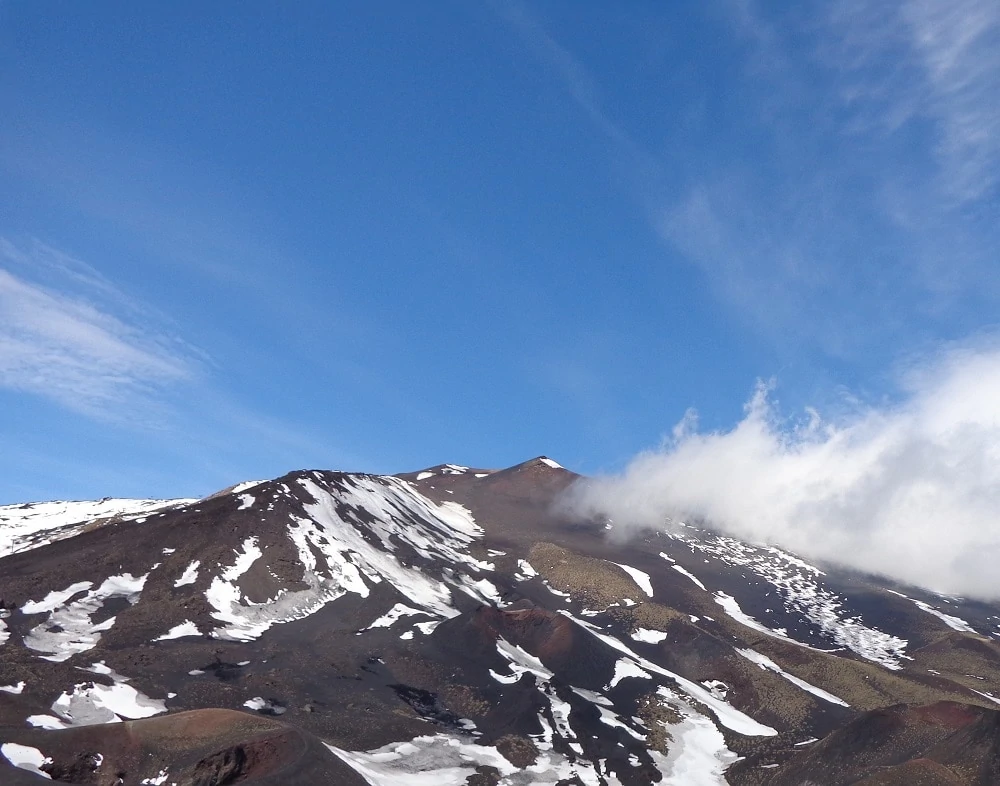
One of the most iconic natural landmarks of Italy is Mount Etna in Sicily. Etna has a lot of ‘mosts’ to its name, including being the highest volcano in Europe and one of the most active volcanoes in the world.
The 3326 meters mountain dominates the eastern part of Sicily, constantly puffing and erupting. However, Etna is a “good mountain”, its eruptions are not very destructive, most of the time, at least. On the contrary, the soil around the volcano is extremely fertile and produces some of the best fruits and vegetables in the world.
Experiencing Etna is a must when you visit Sicily. That includes getting used to the permanent presence of the volcano, hiking on the slopes of Mt. Etna, and also enjoying the olive oil, wine, salads, and desserts made with products grown there.
You can easily take a day trip to Mount Etna from Catania, Taormina, or anywhere else on the eastern coast of Sicily. The scenery changes as you go higher on the mountain. You can drive up to Sapienza Refuge, then take the cable car up to the summit.
One of the most beautiful symbols of Italy is the image of Mount Etna seen from the Greek Theatre in Taormina.
Basilica di San Petronio in Piazza Magiore, Bologna
Explored by Larch from The Silver Nomad
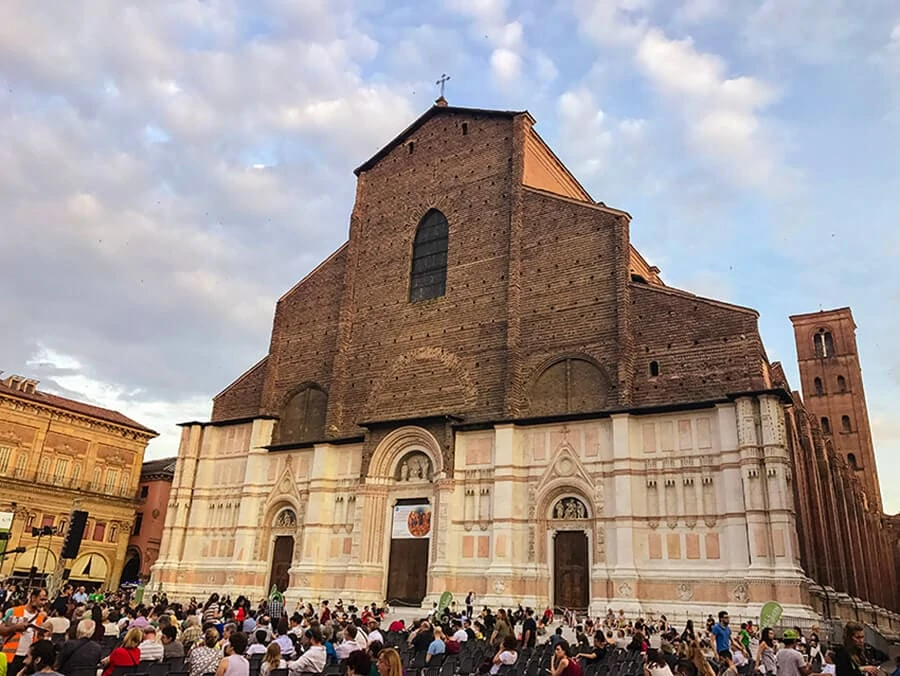
Dominating one side of Piazza Maggiore in Bologna, Basilica di San Petronio towers above you. Dramatic with its two-tone façade – the red and white marble below and bricks above – it is one of the largest churches in the world and the sixth-largest in Europe.
Although construction started in 1390, it took nearly two hundred years to get it to this stage. Measuring 132 metres long, 66 metres wide and 47 metres high, there were plans to make the Basilica 224 metres long and 150 metres wide. This would have meant that it would have been larger than St Peter’s in Rome. The Catholic Church would not allow this, and so further building was halted.
Inside is ornate with towering red marble columns supporting the arched ceiling above. The main altar has a 15th century wooden painted crucifix and a fresco depicting the Madonna with St. Petronius.
Saint Petronius, whom the Basilica is named after, was the bishop of Bologna in the fifth century and became the patron saint of Bologna.
On the floor of the Basilica di San Petronio is the longest indoor meridian line in the world, designed in 1656 by Italian astronomer, Gian Domenico Cassini, it measures 68.8 metres. The sunrays enter from a hole 27 metres from the ground in the vault.
Entrance to the Basilica is free, but if you would like to take photos inside, you can buy a special pass for 2 Euros (1.75 BGP/2.25 USD). For a rooftop view of Bologna, you can go to the top of the San Petronio tower to the rear of the Basilica either by lift or by stairs. There is a charge of 3 EUR (2.75 GBP/3.50 USD).
Villa Borghese, Rome
Explored by Maartje & Sebastiaan from The Orange Backpack
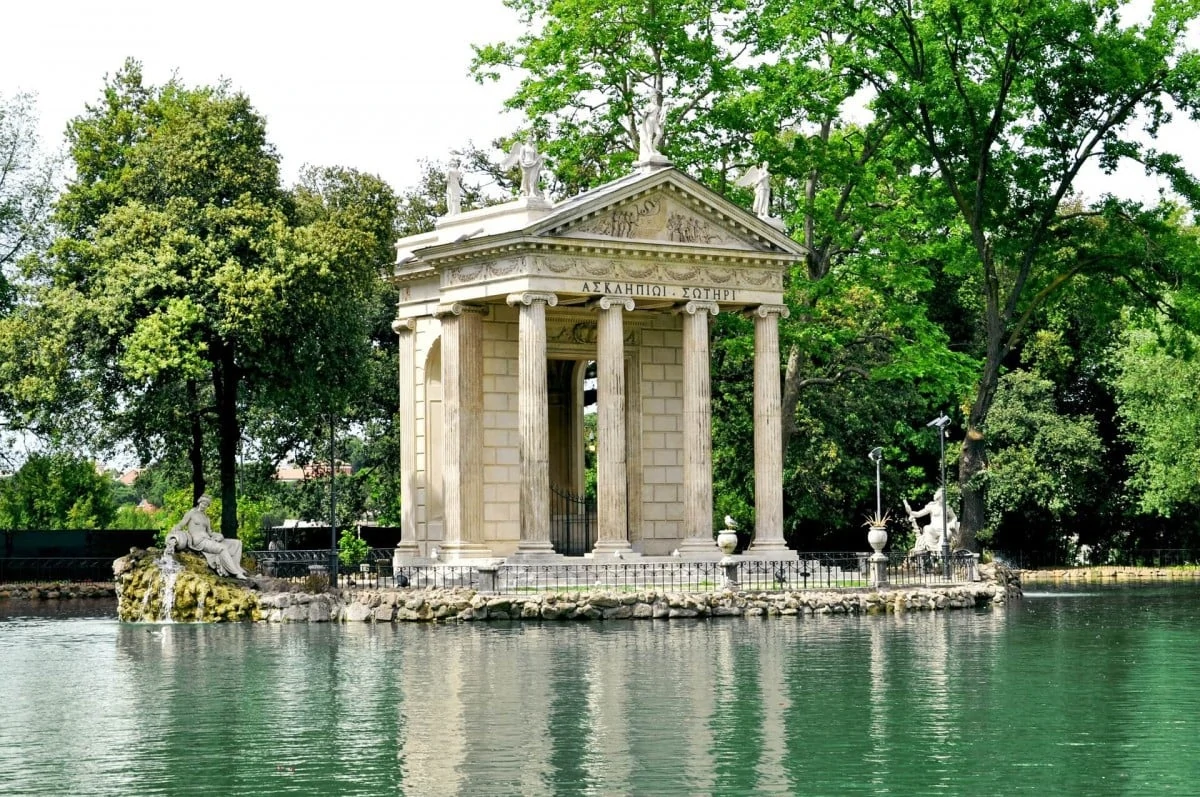
One of the most iconic and romantic places in Italy is Villa Borghese in the capital of Rome. The public park is the perfect place to unwind after exploring Italy or just Rome and enjoy some culture in one of the most beautiful spots in the country.
Villa Borghese is one of the biggest public parks in the city, and one of the best Rome landmarks. It’s not far from the famous Spanish Steps and Piazza del Popolo with its beautiful twin churches and Egyptian obelisk. Make sure to stop at the Santa Maria del Popolo, famous for Raphael’s paintings and one of the most beautiful basilicas in Rome.
The public park is a great place to just scroll around, unwind and enjoy a picnic. A central lake is located in the heart of the park. You can rent a rowing boat for a romantic boat ride along the lake, enjoying the view of the small island with its old temple.
One of the highlights of the park though is not the park itself, but the museums in the park. The most famous one is the Galleria Borghese. The Galleria is located in a beautiful neoclassical building and home to the most stunning art works. Highlights are the sculptures by Bernini, especially the two depicting old mythical stories – Apollo and Daphne, and the Rape of Proserpina.
You should book your tickets for the Galleria Borghese well in advance, as you can rarely book them for the same day.
Ponte Vecchio, Florence
Explored by Kate from Our Escape Clause
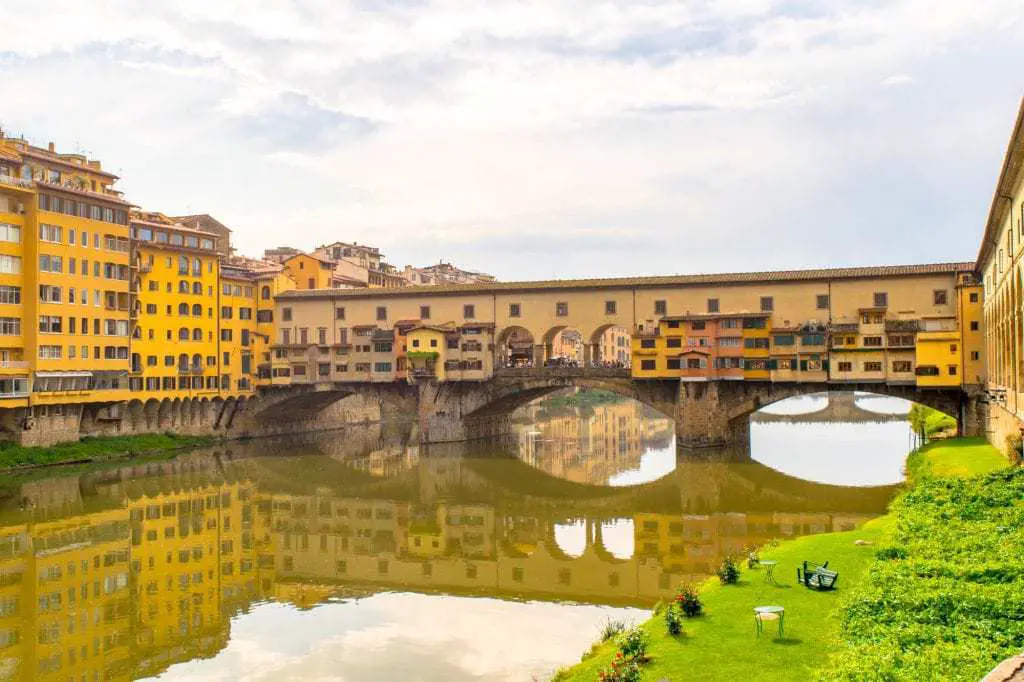
The Ponte Vecchio (literally “old bridge”) is one of the most famous Florence landmarks, and has a long and storied history that touches multiple places in time.
First records of the original Ponte Vecchio – like many bridges of its time, it has been rebuilt a time or two – date to 966, and up until 1218, it was the only bridge to cross the Arno River in Florence.
Fast forward to the 1940s, and that was true again: when Florence was occupied by the Nazis, they destroyed all the bridges across the river–except the Ponte Vecchio.
Today, the Ponte Vecchio is best-known for being a tourist attraction that belongs on any Florence itinerary: boasting excellent views of the Arno and lined with goldsmiths and jewellery shops on each side, it’s a charming place.
As is typical in Florence, the reason you’ll only see jewellery shops on the Ponte Vecchio today is a piece of history, not a mere happenstance: in 1593, Ferdinand I of the Medici family declared that only jewellers and goldsmiths were allowed to have shops on the bridge, and that has continued to this day.
The reason why is quite simple: once upon a time, the shops on the Ponte Vecchio were populated by butchers, tanners, and fishmongers, creating quite a stench near the bridge.
The Medici family, who crossed the Ponte Vecchio to get from Palazzo Pitti on one side to the Palazzo Vecchio (Florence’s city hall) on the other in their private Vasari Corridor that runs between the two buildings, didn’t care for the smell, and changed who could work on the bridge.
Top tip: A short walk from the Ponte Vecchio you can find Piazza della Signoria, and in that a replica of the famous Statue of David – although if you’re keen to see the real statue, head to the Academia Gallery to see Michelangelo’s David!
Sistine Chapel, Vatican City
Explored by Lee from The Travel Scribes
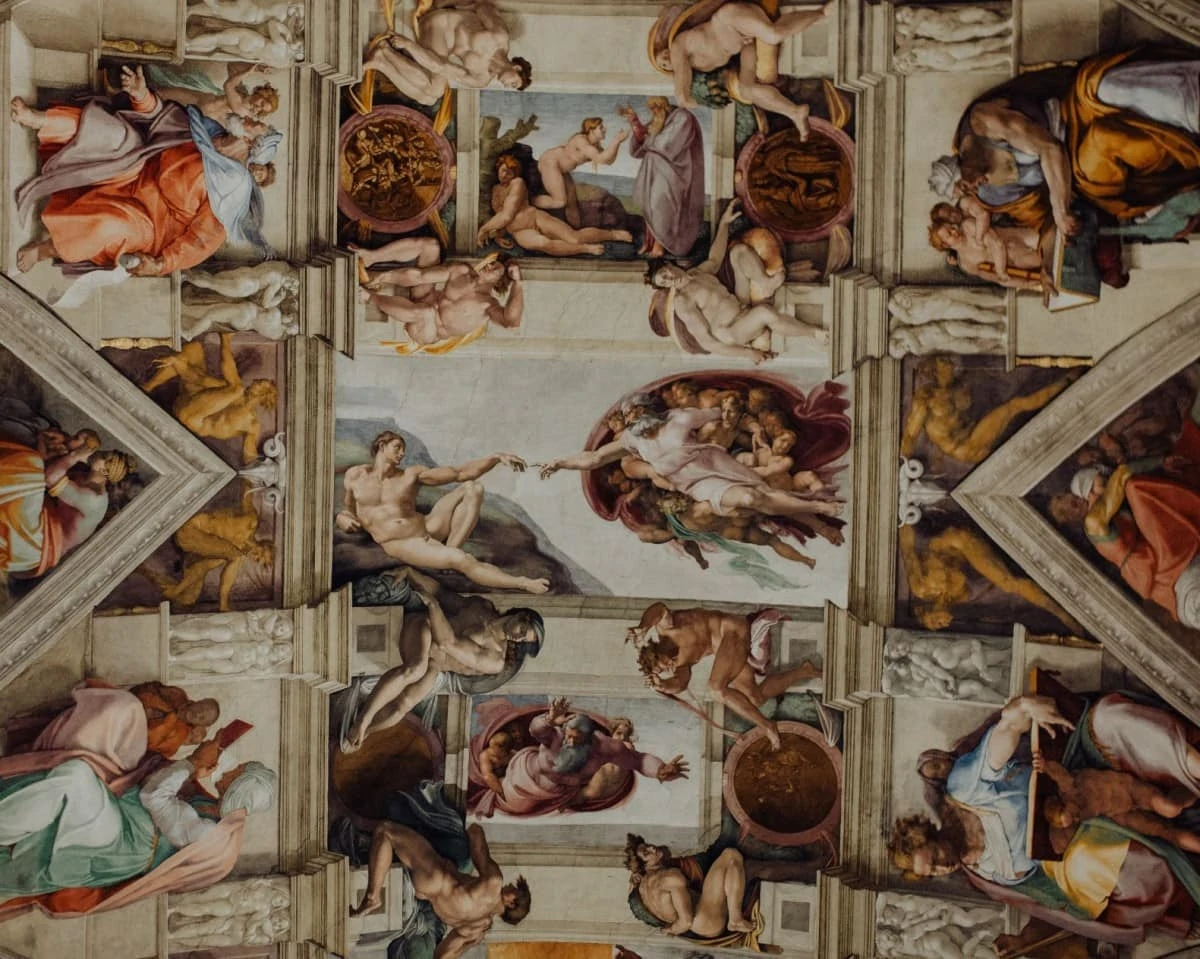
Ok, so not necessarily in Italy, being located in the Vatican City which is technically another country. Seeming that the Vatican City is in Rome, we had to at least mention one of the many iconic man made landmarks in the smallest country on earth.
Although the Vatican City is itself littered with amazing landmarks including the likes of the Obelisco Piazza San Pietro Città del Vaticano and of course, the imposing St Peter’s Cathedral, we only had room for one landmark from the Vatican and it had to be the most famous painted ceiling in the world, the Sistine Chapel – home to Michelangelo’s masterpiece.
Set in the Apostolic Palace (home to the Pope), the chapel was named after Pope Sixtus IV who was responsible for its restoration in the late 15th century. And it is home to many stunning frescos painted by famous Renaissance Painters, but it is The Last Judgement by Michelangelo which is the chapel’s crowning glory.
St Mark’s Square, Venice
Explored by Shandos from Travelnuity
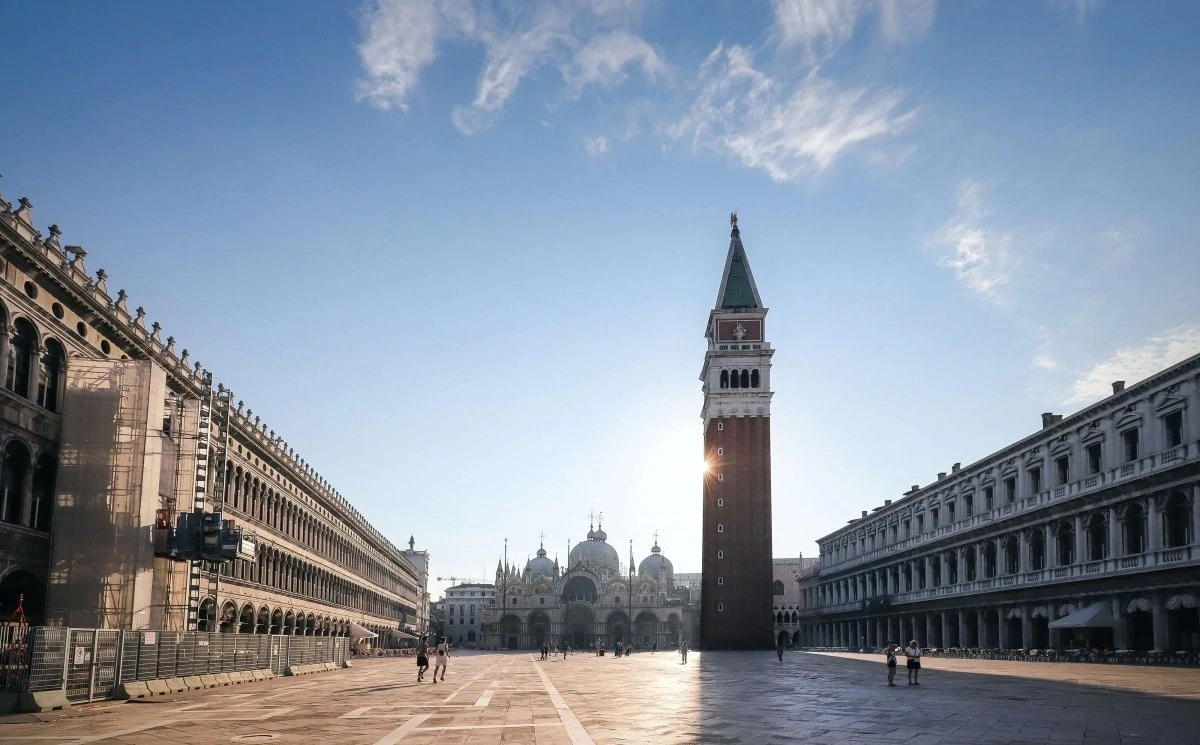
One of the must-visit landmarks in Italy is St Mark’s Square in Venice, or Piazza San Marco. The most important of all the squares in Venice is lined with its most important buildings, including the Doge’s Palace, the Palazzo Patriarcale, and of course St Mark’s Basilica, not to mention St Mark’s Campanile. Off to the side lies the Venice Lagoon and the start of the Grand Canal, plus the romantic Bridge of Sighs is close by.
Allegedly called by Napoleon the “drawing room of Europe”, this square remains bustling with throngs of tourists all day long, whether queuing to enter the basilica, just wandering around and taking in the opulence of the buildings, or enjoying a leisurely cappuccino. (Be warned that the prices in the nearby cafes are about the highest anywhere in the world.) Not to mention the famous pigeons.
Unless you’re visiting during the quieter winter months, it’s best to visit the square early or late in the day, when it is less likely to be crowded. It’s a must to enter the basilica, including spending time admiring its rich mosaics and sculptures. It’s also possible to ascend to the top of the Campanile for a fee. However, don’t also miss simply spending time taking in the ambience of this beautiful and important spot.
Piazza del Campo, Siena
Explored by Greta from Greta’s Travels
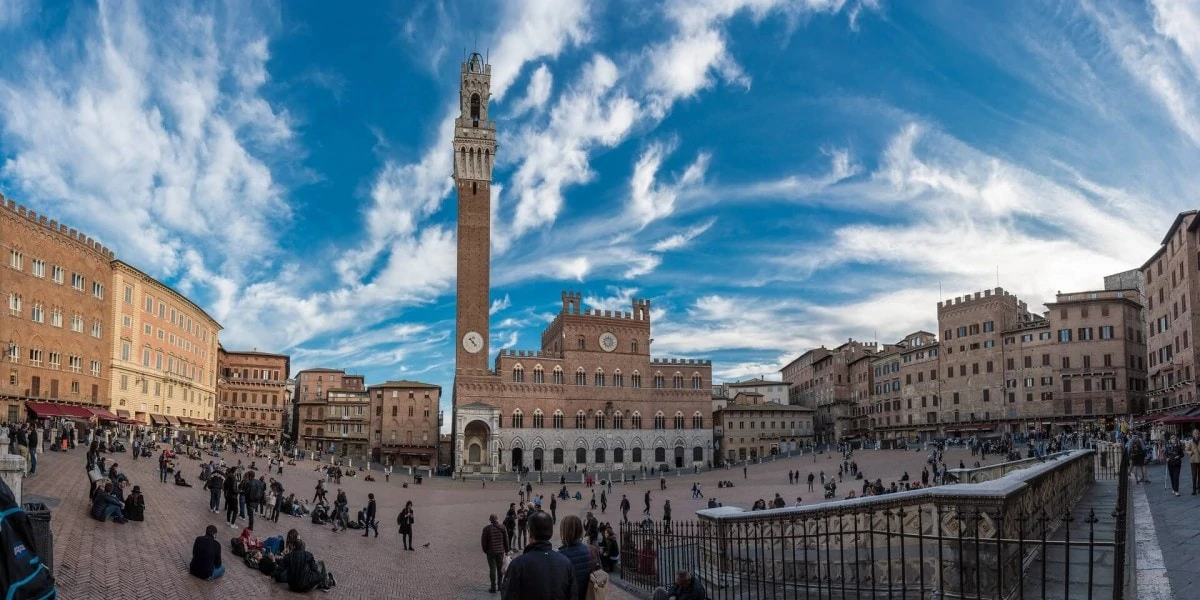
If you’re searching for the most iconic landmarks in Italy, then Piazza del Campo in Siena should definitely feature on your bucket list. Piazza del Campo is the main public space and historical centre of Siena, in Tuscany.
It was built on the three main roads that lead to and from Siena, and was meant as a neutral ground where all the inhabitants of Siena could gather for holidays, events and celebrations. To this day it still hosts the famous Palio of Siena, the horse racing competition that takes place every summer.
The Palazzo Pubblico used to be the government office of Siena, and to this day is still a recognisable and important part of the square. The Torre del Mangia, the distinctive tower of Palazzo Pubblico, is 88 metres tall and offers unparalleled views over Siena and the Tuscany countryside.
Besides the historical importance of Piazza del Campo, it’s also a beautiful square to simply walk around and soak in the atmosphere. It’s considered one of Europe’s greatest medieval squares, famous for its beauty and architectural integrity.
No Tuscany itinerary would be complete without a stop in Siena, and especially Piazza del Campo. So, don’t miss out, and make sure to add Piazza del Campo to your Italian landmarks bucket list.
Orvieto Duomo, Umbria
Explored by Bella from Passport & Pixels
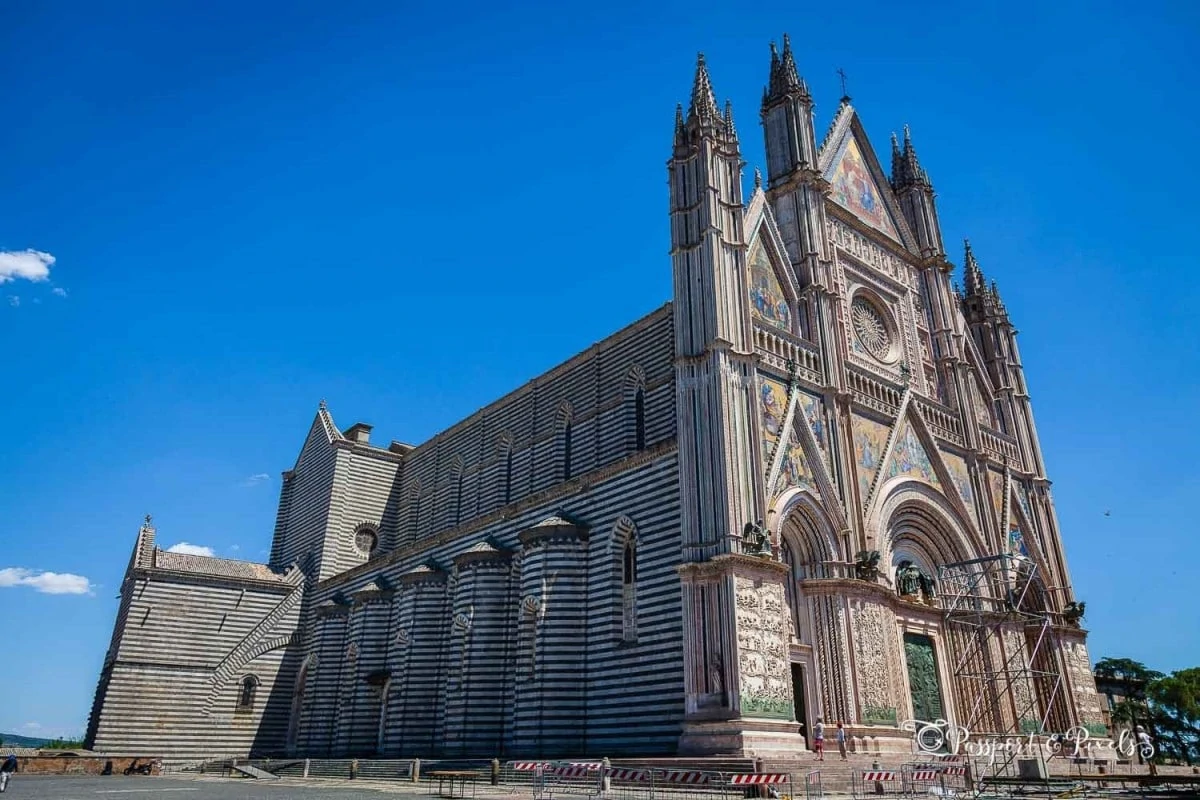
The Duomo in Orvieto in Umbria may not be as famous as the Colosseum in Rome or the Leaning Tower of Pisa, but in terms of its stunning beauty and sheer magnificence both outside and in, it really is up there as one of Italy’s finest landmarks.
Outside, this huge 14th century Catholic cathedral stands in front of a wide piazza, its sides eye-catchingly striped black and white like a giant peppermint humbug sweet. The front is covered with colourful mosaics, glittering gold leaf, and intricate Gothic carvings showing scenes from the Old and New Testaments.
Inside, the stripy walls continue down the nave, which unlike most churches does not contain any pews, giving the church a spacious, airy feel. On a sunny day the light is incredible in here, because the windows are made of part-stained-glass, part very thin slices of alabaster stone, which give the interior an orange glow and also keep the space cool in summer.
But what’s even more spectacular inside are the frescoes – some of the most detailed and stunning to be found anywhere in Italy. Frescoes by celebrated artists including Fra Angelico and Luca Signorelli cover the walls and ceiling of the apse and side chapels, showing magnificent Bible scenes including the Last Judgement and the life of the Virgin Mary.
The whole cathedral is a visual feast that is not to be missed, especially when you consider that Orvieto is a fantastic town that receives far fewer tourists than many other Italian destinations.
Ancient Theatre, Taormina, Sicily
Explored by Veronika from Travel Geekery
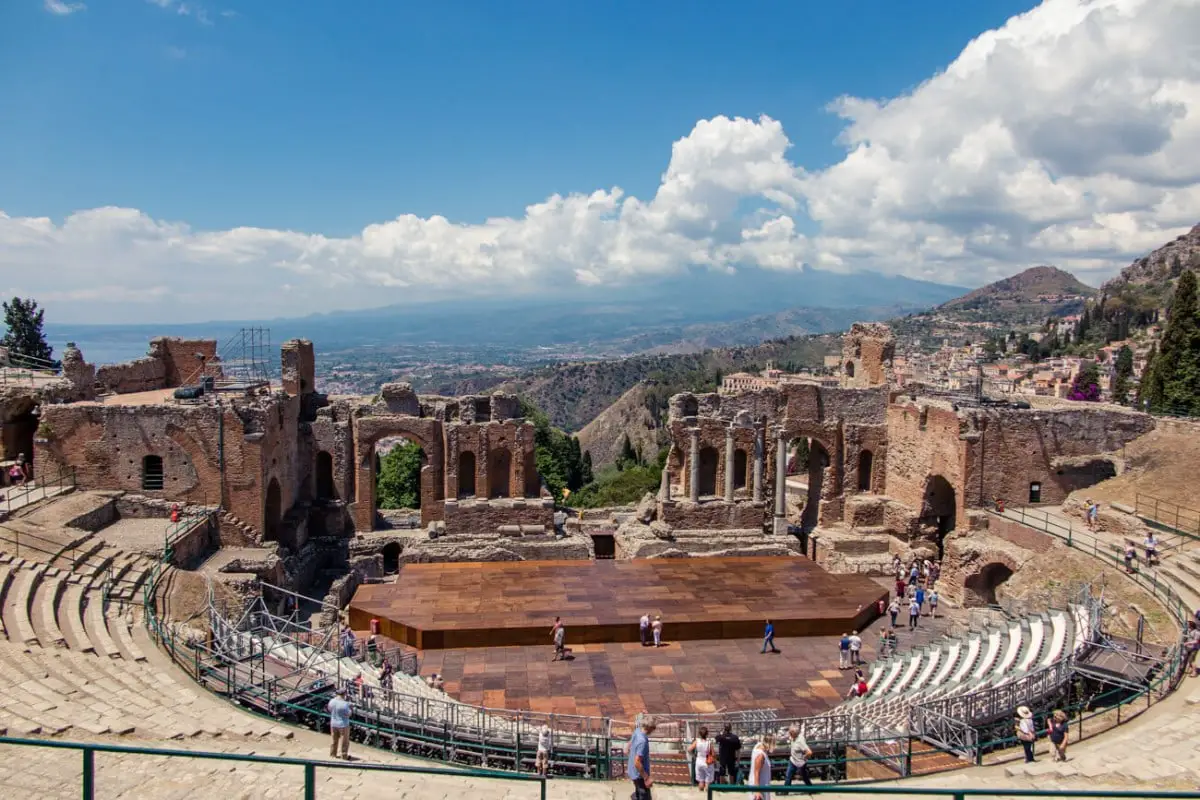
The Ancient Greek Theatre is the no. 1 tourist landmark in Taormina, a lovely cliff-side town in the Northeast of Sicily. It’s the second largest on the island of Sicily, right after Syracuse’s theatre.
The ancient Greeks built this amazing amphitheatre into the rock sometime in the 3rd century BC to host theatre and musical performances. However, it’s mostly the later Romans who gave it the complete look of the time by building on top of a previous foundation, adding brick structures, pillars and decorative elements.
You can sit at the “cavea” where the audience would sit back in the day and watch the amazing view from the theatre – over the Ionic Sea and, on a clear day, you might be able to spot Mount Etna too. Even though you can’t observe any gladiator games any longer, on and off Taormina hosts concerts at the theatre. Apparently, it’s an otherworldly experience, and not just because of the unique acoustics.
You can see the Greek Theatre from a few viewpoints in the town and even from some prime Taormina villas. Together with the view over the Ionian Sea, it’s the absolute best view to wake up to in the morning.
Pantheon, Rome
Explored by Merryl from Merryl’s Travel & Tricks
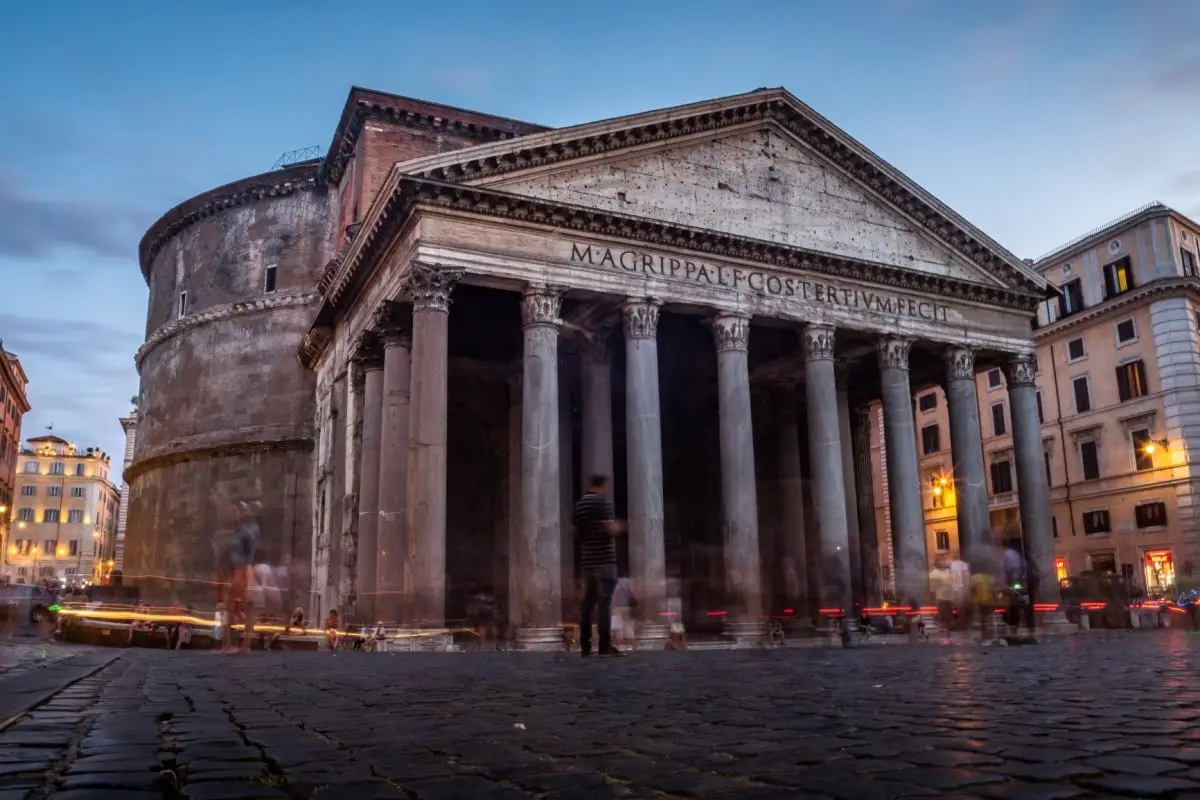
The Pantheon is one of the most stunning monuments in all of Rome and is definitely one of my favourites. The dome of the Pantheon is the largest unreinforced concrete dome in the world. This monument is almost 2000 years old and has survived the test of time due to the special kind of concrete that used a mix of limestone and volcanic ash to prevent the spread of microscopic cracks!
The Pantheon has been burnt down twice and the one standing today was rebuilt between 118-125 AD by emperor Hadrian. Many believe that it served as a temple dedicated to all Gods in earlier times but was converted to a church in the 7th century. Right in the center of the monument is a big hole in the ceiling called the Oculus which means eye in Latin. This is the only source of natural night inside the complex.
Today, the Pantheon is open to the public for free daily from 8:30 am to 7:15 pm. The best way to avoid the crowds, especially if you’re visiting in the summer is to go early in the morning, right when it opens. My favourite time to visit the Pantheon though is late night as I like to sit at one of the restaurants in the square outside and admire the beauty of the monument all lit up.
Blue Grotto, Capri
Explored by Lori from Travelin Mad
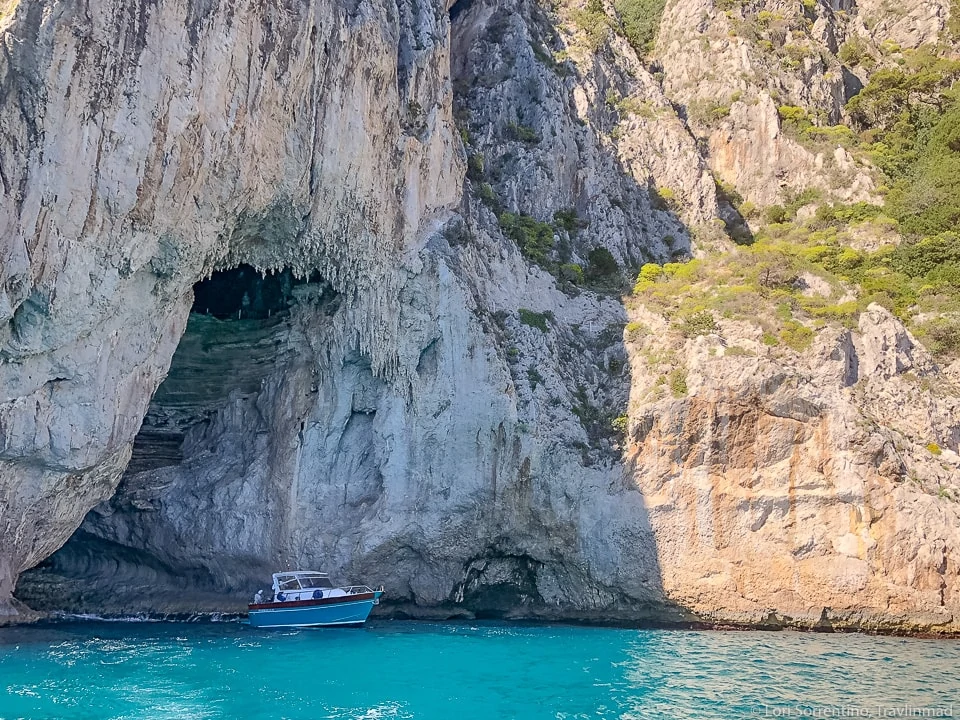
The most famous site on Capri, Italy is surely the Blue Grotto or Grotta Azzura, and a visit here is one of the most enchanting things to do in Capri. The naturally formed sea cave, 196 feet long and 82 feet at its widest, gets its name from the clear bright azure colour of the water inside the cave. Sunlight is filtered as it passes through an opening directly beneath the mouth of the cave creating the blue colour.
Adding to the light show, objects beneath the water covered with tiny bubbles create dazzling silver reflections that sparkle through the blue water.
In Roman times the Grotto was used as a marine temple. Later it was avoided by seamen who believed that demons and spirits inhabited the cave. Today, tour boats ferry visitors back and forth throughout the day.
A boat ride to the Grotto takes only ten minutes from the Marina Grande. The powered boats stop outside the entrance to transfer passengers to small rowboats. Visitors must lean back as the rowboat passes through the small opening to the cave, only seven feet wide and just over three feet high. As the boat enters the cave everything is suddenly washed in bright azure sparkling with silver streaks.
The entrance fee to the Grotto costs 14 EUR (about 12.75 GBP/16.50 USD). Tour boats don’t operate if it’s too windy or if there are high seas. If it’s overcast, wait for a bright sunny day — to really capture the magic of the Blue Grotto.
Juliet’s Balcony, Verona
Explored by Jamie from Travel Addict
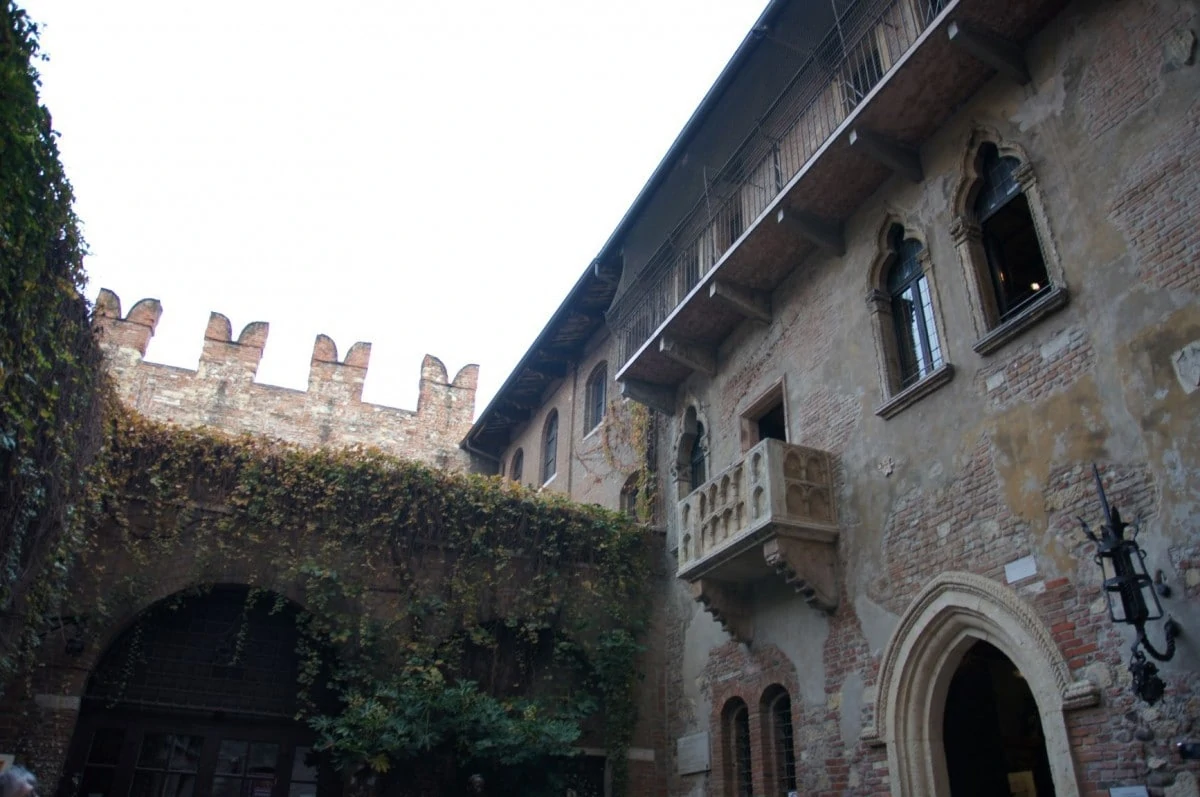
The Italian city of Verona is absolutely charming with its old medieval town, the ancient Roman Arena amphitheatre, and narrow streets for wandering and soaking in the atmosphere. The city is often overshadowed by nearby Venice or connected solely as a location in Shakespearean play. Within its own right it is a beautiful city to visit.
And yet? The Shakespearean references and setting has its own particular draw for this charming town. Any fan of Shakespeare’s will be very familiar with the Italian town of Verona, which featured in many plans from The Two Gentlemen of Verona to Romeo & Juliet.
Although Romeo and Juliet are fictional characters there is a hint of truth in the background of their story, and the Cappello family are the ones who made “Casa di Giulietta” or Juliet’s House. The house itself was not Juliet’s (since she was fictional) and the balcony was a 17th century addition, but there is still something magical about the house.
Traditionally visitors would leave notes on the wall, call up to Juliet’s balcony, write a letter asking Juliet for love advice and touch the right breast of the Juliet statue for good luck. The tradition of writing the advice letters was featured in the 2010 film Letters to Juliet.
Juliet’s House is open to visitors and features period pieces related to the time frame of Verona in Shakespeare’s time. If you take the tour you even can stand on the balcony itself. Where art thou Romeo?
The Leaning Tower, Pisa
Explored by Lee Nelson from The Travel Scribes
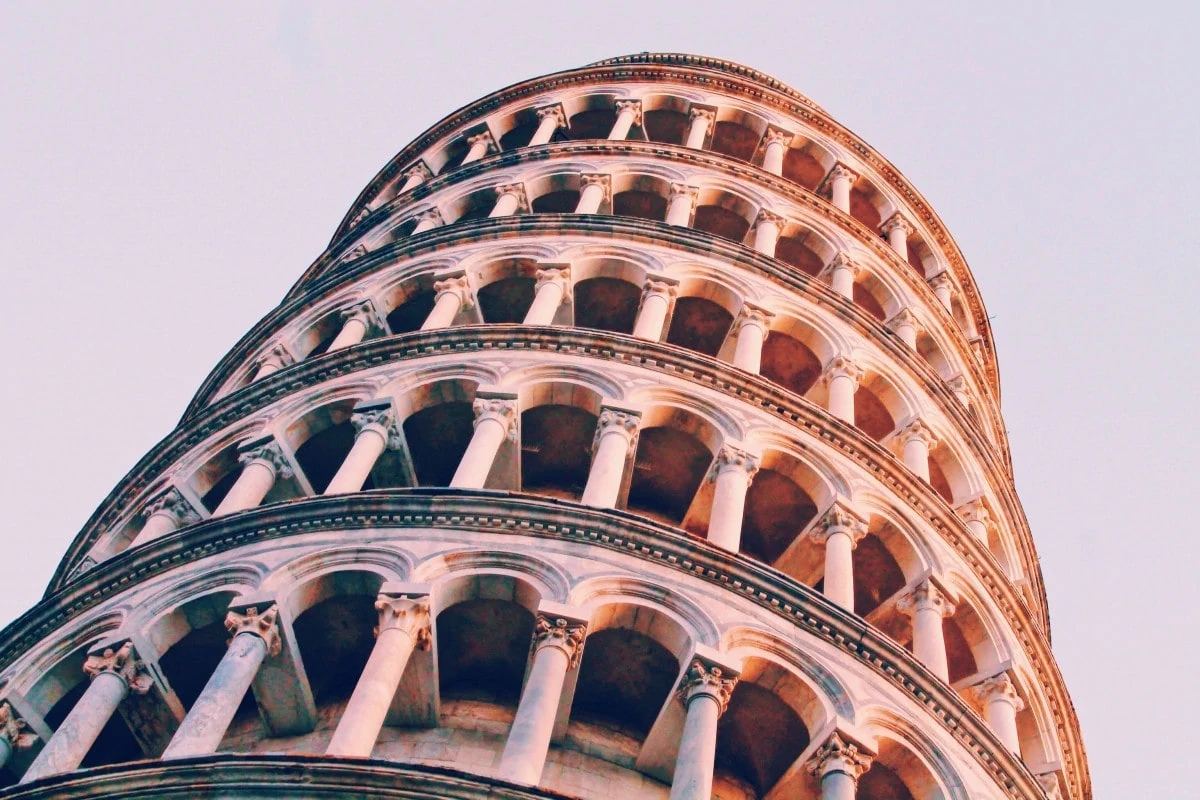
It’s a world famous landmark, and immortalised in photos from thousands of tourists. It’s the Leaning Tower of Pisa, a freestanding Bell Tower of the main cathedral in the picturesque town of Pisa.
The foundations of the global icon were laid in 1173 but would take just less than 200 years to complete, and was run over three stages. And, it was during it’s construction that it famously started to lean. In 1178, while building the second floor, it began to sink due to flimsy foundations, only three metres thick. This would be a major contributor to it starting to lean, which has worsened over the years. Actually, many efforts have been made to restore it and stop the downward tilt, most of which have failed and some have made it worse!
Nowadays it leans by about 3.97 degrees which, albeit small, still makes it an unusual, and pretty photographable landmark in Italy.
Rialto Bridge, Venice
Explored by Dymphe from Dymabroad
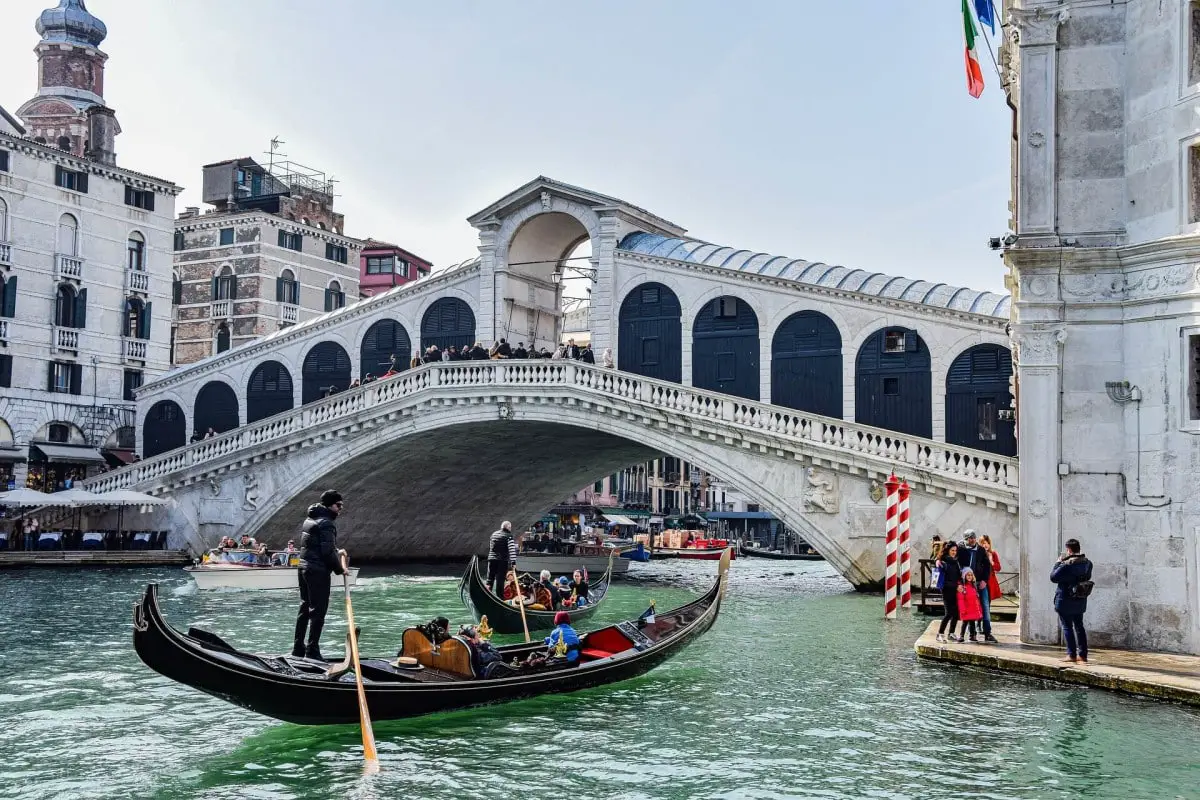
When you are in Venice, everywhere you go there are amazing pieces of architecture and other beautiful elements. The whole city looks amazing. However, there are some sights that really stand out and are especially worth your time to check out!
One of these iconic Italian landmarks is the Rialto Bridge. This is not an ordinary bridge like all the others in the city. Of the four bridges that span the Grand Canal, this one is the oldest. It was built just before the year 1600, but earlier variants already stood there all the way back in the 1200s.
What’s special about this bridge, besides the beautiful white stones, is that as you walk across the bridge to get to the other side, you see a few shops that are located on it, including the likes of a jewellery shop and stalls where you can buy souvenirs. Also, to get an even more Venetian experience, you should go on a boat and sail underneath the bridge!
The bridge is very centrally located and you can walk there from all parts of Venice. What’s also convenient is that there are a lot of signs that indicate where you should go to see this impressive landmark. Furthermore, this is one of the best Instagram photo spots in Venice.
Interested in other landmarks? Why not have a look at some of our other landmark articles:
- London landmarks that you can’t miss on your trip to the UK’s capital
- French landmarks to add to your bucket list
- The best US landmarks
- The ultimate landmarks in South America
- Iconic landmarks in Germany
- The most beautiful monuments and landmarks in Croatia
- Top 30 must-visit attractions in England.
So, what do you think of our list of the most iconic 25 monuments and famous landmarks in Italy? Are there any that we’ve missed off the list? Let us know in the comments below, otherwise we hope you find this a useful travel guide and have now added some of these amazing wonders and stunning sites to your travel bucket list.
Want to save it for later? Why not pin it…
